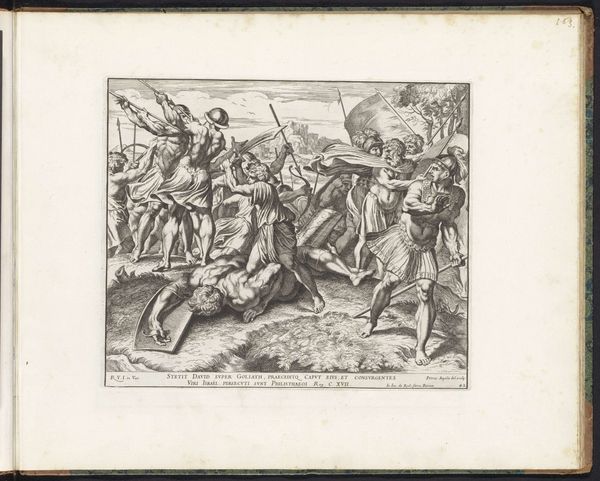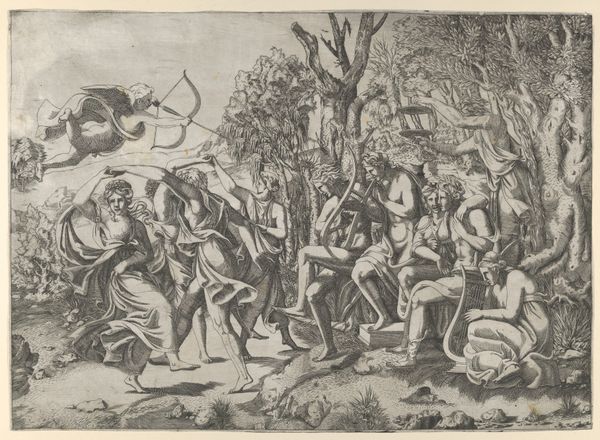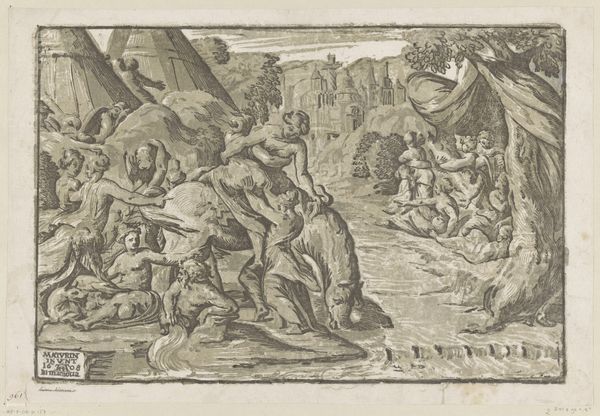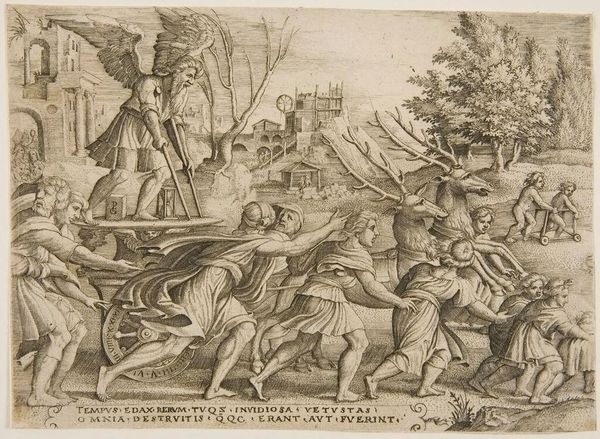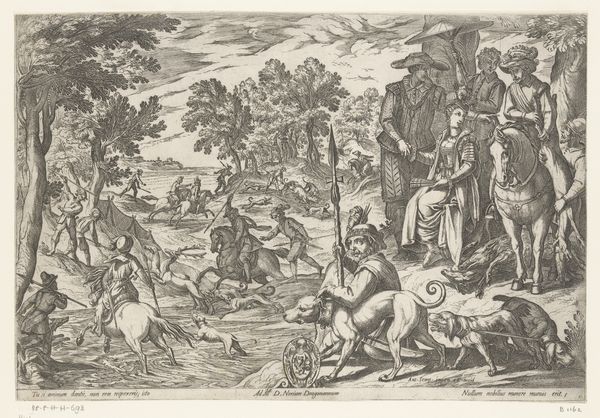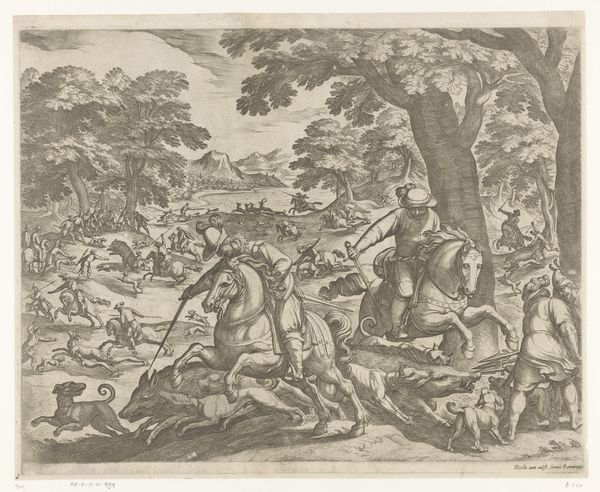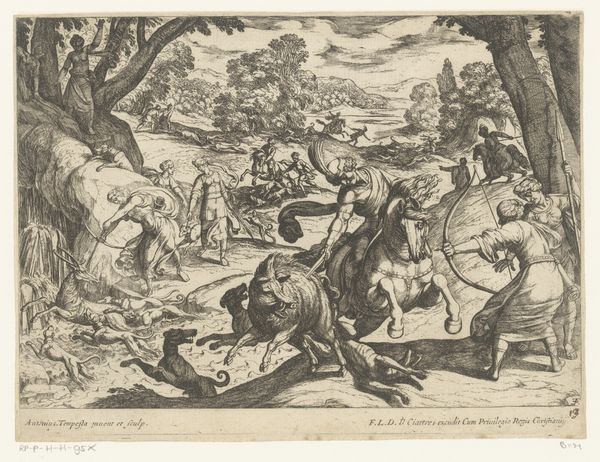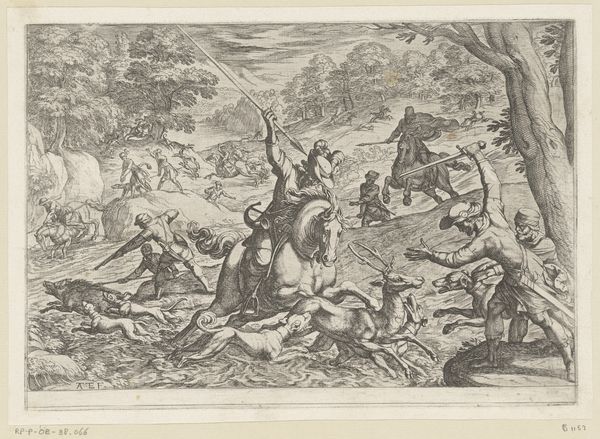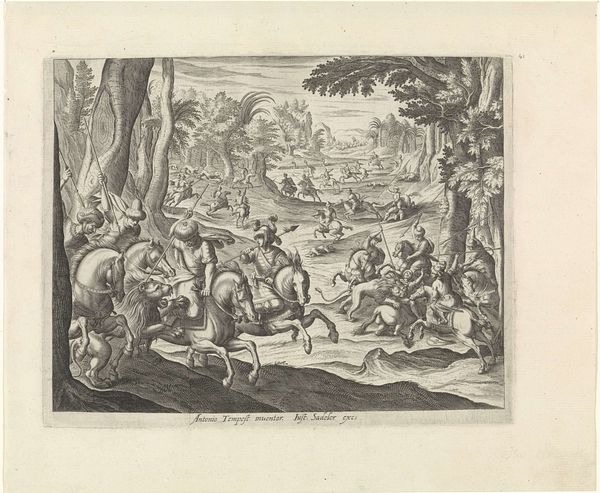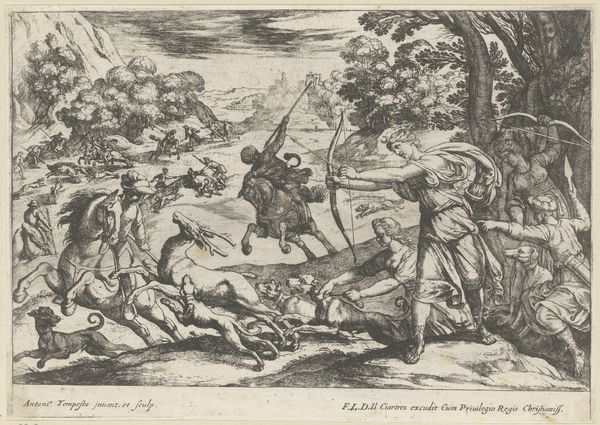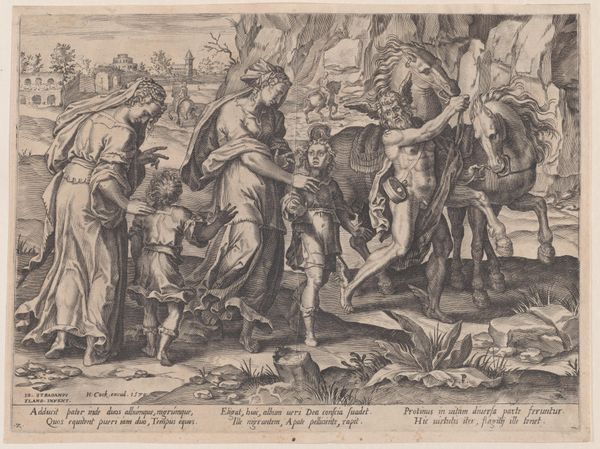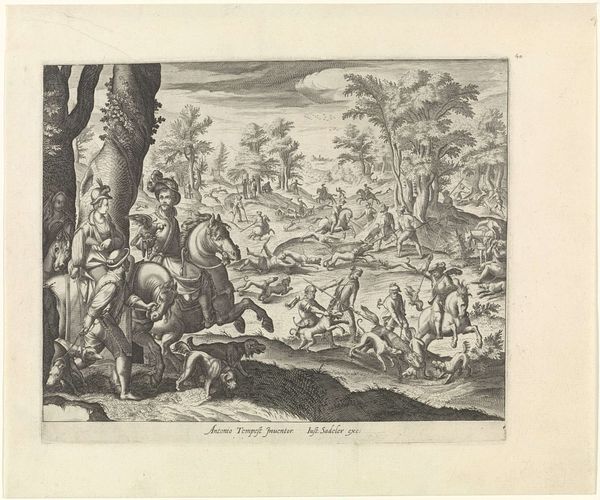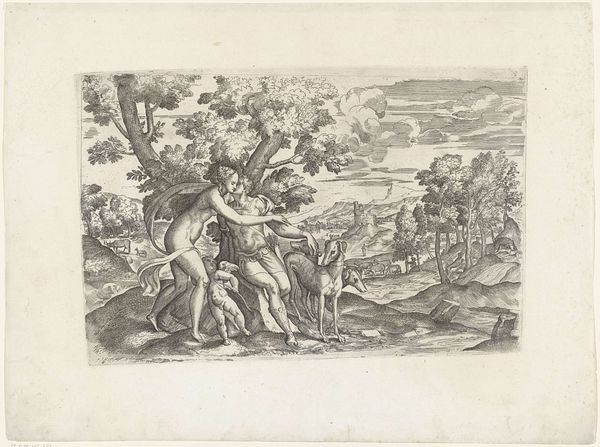
engraving
#
allegory
#
old engraving style
#
figuration
#
personal sketchbook
#
line
#
history-painting
#
italian-renaissance
#
engraving
#
realism
Dimensions: height 151 mm, width 208 mm
Copyright: Rijks Museum: Open Domain
Editor: Georg Pencz's "Triumph of Time," created between 1537 and 1541, is currently housed in the Rijksmuseum. It's an engraving filled with symbolic figures being pulled by humans and deer, an angel overlooking. There's something unsettling in its classical style that I'm really drawn to. How do you interpret this work? Curator: What I see here is a commentary on the inexorable march of time, yes, but more precisely how societal structures participate. Consider the very title, and the winged figure with architect's tools poised above. It's an allegory, certainly, but what's being allegorized? Time as a destroyer but perhaps as an *agent* of change and social transformation. Editor: An agent of social transformation? Curator: Absolutely. Pencz, working during the Renaissance, was acutely aware of the shifts in power and belief that were reshaping Europe. Who are the figures pulling Time's chariot, and what does it signify that they seem compelled to do so? Is Time an independent actor, or one co-created? Is there an element of resisting power? The figures could embody humanity's struggle against inevitable decay, reflecting Renaissance anxieties about mortality. Editor: So, it's not just a passive reflection on the passage of time? Curator: Precisely. Look at how the line work creates a sense of frenetic energy. There’s a tension between the classical figures and the dynamic composition. Consider how gender, race, and societal rank impact one's journey through time. Whose narratives get prioritized, and whose are erased? And how might that inform your understanding? Editor: That definitely changes how I view the figures laboring and being dragged, and who we center in the narrative! There's an element of resistance but also an almost desperate embrace of inevitability, a push to maintain social hierarchy even at one’s expense. Curator: Precisely! Seeing this work through an intersectional lens really helps bring forth its complexity. It really invites us to critically engage with art history. Editor: Absolutely! I'll definitely approach engravings, and art in general, looking at how power dynamics play a role in shaping even allegorical narratives.
Comments
No comments
Be the first to comment and join the conversation on the ultimate creative platform.
